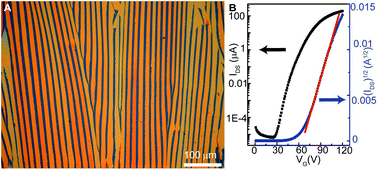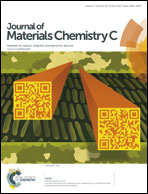Solution-grown aligned C60 single-crystals for field-effect transistors†
Abstract
Single crystals of C60 have been widely prepared previously. However, their electronic properties are much less frequently studied, although C60 is known as an outstanding electronic material. Also, the reported electron mobility values (∼10−2 cm2 V−1 s−1) of C60 single-crystals are unexpectedly low possibly due to the difficulties in the fabrication of single-crystal devices. We have recently reported a droplet receding method for the solution-grown C60 single-crystals with mobilities above 1 cm2 V−1 s−1. In this work, we systematically investigate the effects of solvent and surface properties of the substrate on the growth of C60 single-crystals. Well-aligned C60 needle-like and ribbon-like single-crystals were grown from suitable solvents (m-xylene or a mixed solvent of m-xylene and carbon tetrachloride) conformally on the field-effect transistor (FET) substrates that were wet well by the receding droplet. Based on the ribbon-like single-crystals, an average electron mobility of 2.0 ± 0.61 cm2 V−1 s−1, Ion/Ioff > 106, and a VT between 36 and 85 V were achieved from 60 field-effect transistors. Insights provided by this work may help accelerate the development of solution-grown single-crystals of organic semiconductors.


 Please wait while we load your content...
Please wait while we load your content...